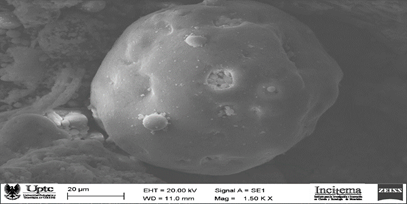
- Aluminosilicates, carbon, characterization, fly ash,
Copyright (c) 2023 Orbital: The Electronic Journal of Chemistry

This work is licensed under a Creative Commons Attribution-NonCommercial-NoDerivatives 4.0 International License.
Abstract
Carbon fly ash (CFA) is the principal industrial waste byproduct from the burning fossil fuel (coal combustion) for the thermal generation of electricity. CFA is a gray or black powdery solid that is constituted mostly metal oxides (Al, Si Fe and Ca), unburned carbon (UC) and other inorganic substance. The management of fly ash has thus been a matter of concern given the requirement of the large area of land for its disposal and potential of causing pollution of air, water, land and effects on human health. Physical and chemical characteristics of fly ash is important, as these characteristics influence its subsequent use and disposal. X-ray diffraction, and fluorescence, scanning microscopy with an energy dispersive spectroscopy, FTIR, BET was the common techniques employed to characterize FA. Characterization by XRD analysis identified the presence of quartz, mullite and sillimanite phases; while the FTIR results allowed the identification of vibrational bands, characteristic of Si-O-Si and Si-O bonds. The EDS analysis coupled to SEM allowed verifying that the composition of the samples is consistent with the results sought and that the morphological characteristics validate the proposed methodology. Surface area analyses (BET) showed that the fly ash possess an active area of 6.02 m2 · g-1.





